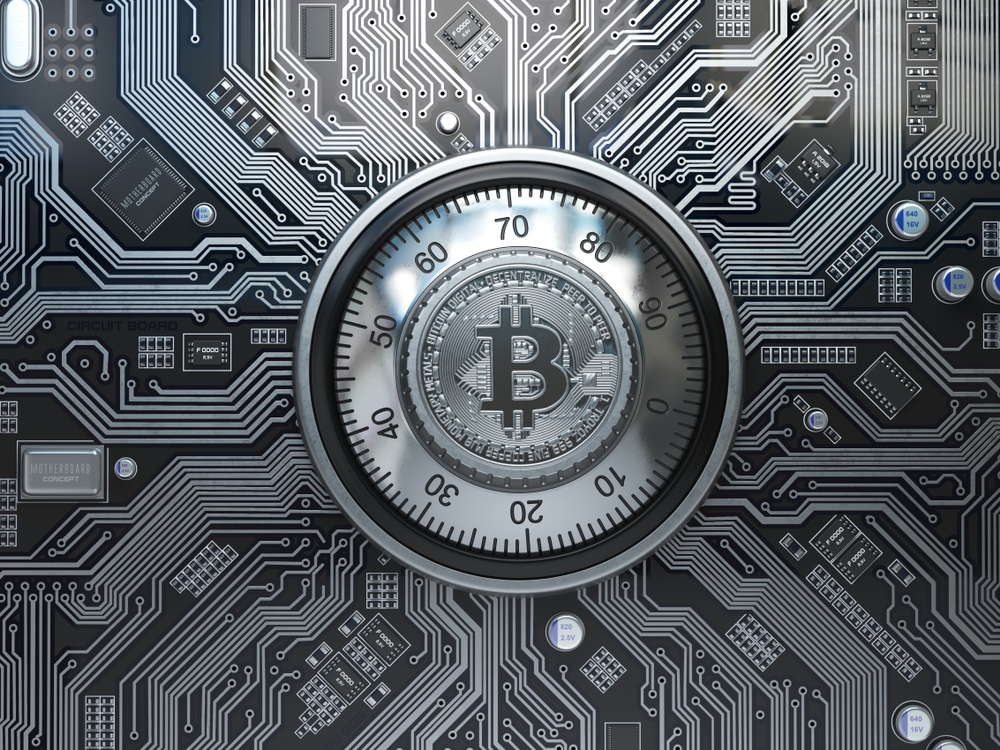
Losing your cryptocurrency can feel like your worst nightmare coming true. One mistake, one slip-up, and your hard-earned digital assets could vanish forever. The truth is, threats like hackers, scams, and even simple human errors are everywhere, but the good news is that you have the power to protect yourself. By taking a few smart steps and staying alert, you don’t have to live in constant fear. Crypto security doesn’t have to be complicated—it’s about knowing the risks and acting before it’s too late. Stick around, and you’ll learn how to stay ahead of these threats and keep your assets exactly where they belong: in your hands.
Are you worried about losing your cryptocurrency? Let’s be honest—keeping your crypto safe might feel like trying to outsmart an invisible enemy. Hackers, phishing scams, or even your own mistakes could all land you in a world of regret. But here’s the game-changer: It doesn’t have to be that hard if you take the right steps today.
Imagine logging into your wallet one day, only to realize your funds have vanished. Scary, right? Unfortunately, these stories aren’t rare, and it’s why understanding the biggest dangers to your crypto is the first step to staying secure.
The Common Threats to Your Crypto Assets
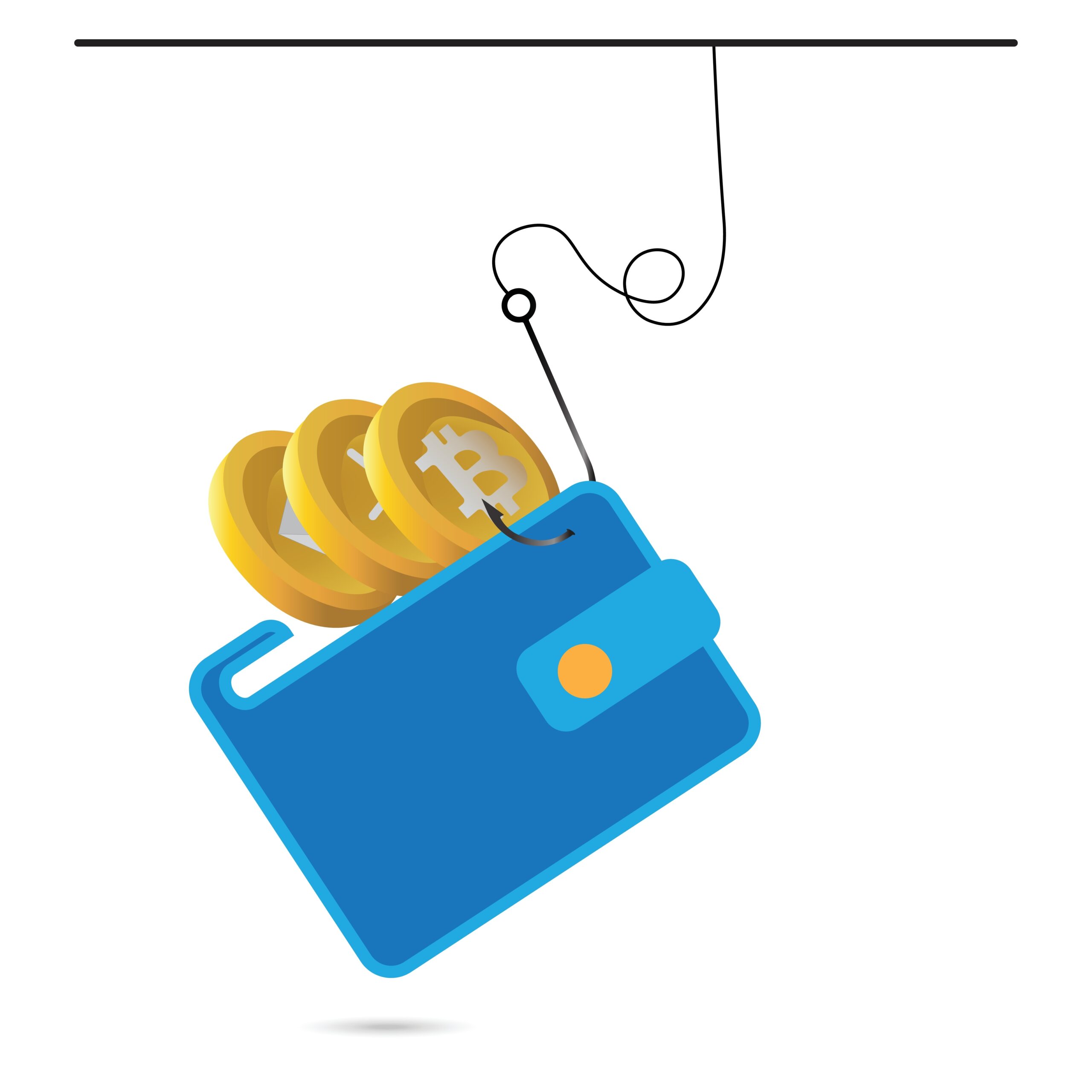
Cryptocurrencies give you freedom and control over your money, but they also come with risks. There’s no bank to call for a refund if something goes wrong. Let’s break down the most common threats:
- Hackers: Cybercriminals use powerful tools to break into weakly protected accounts and wallets.
- Phishing scams: Fake websites or emails trick you into handing over private keys or login details.
- Human error: Misplaced private keys, forgotten passwords, or sending funds to the wrong address can lead to permanent losses.
And this isn’t just fear-mongering. Studies show that crypto scammers stole $3.8 billion in 2022 alone, with phishing and hacking ranked as top attacks. These numbers should push anyone to take their security seriously.
The Cost of Carelessness
What happens if you lose your private key? Simple: Your funds are gone forever. Unlike resetting a forgotten bank password, crypto transactions are irreversible. There’s no customer service agent to save the day; it’s just you and your mistakes. It’s heartbreaking to hear stories about people losing millions because they misplaced a seed phrase or fell for a scam that could’ve been avoided.
For example, in 2021, a man reportedly threw away a hard drive containing 7,500 BTC because he didn’t back it up properly. At today’s rates, that’s around $200 million—completely lost.
So here’s the takeaway: Carelessness can cost you big time. And it’s so easy to avoid with a few smart safety measures.
My Biggest Tip Upfront
If there’s one thing you should never ignore, it’s this: Get yourself a hardware wallet. These devices are like personal vaults for your crypto, with layers of security that hackers can’t touch. They’re not just helpful—they’re essential. But more on that later.
Curious about how to take full control of your assets and outsmart these risks? Stick around as we unravel everything you need to know about crypto security in the next section.
Understanding the Basics of Crypto Security
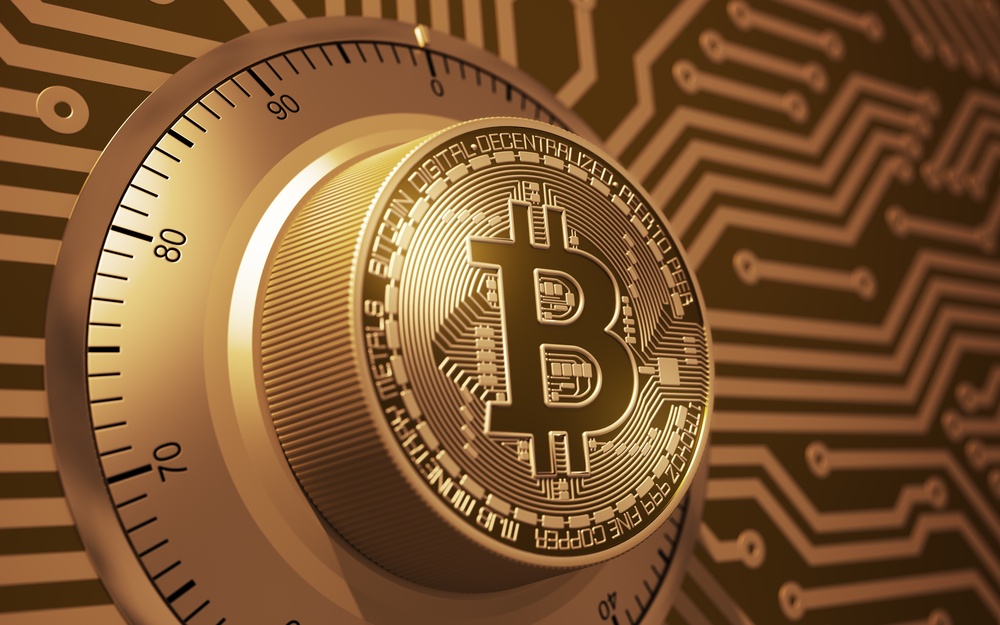
Crypto Security Guide Updated Everything You Need to Do to Secure Crypto Investments
If you’re holding cryptocurrency, the first thing to understand is this: there are no banks, no middlemen, no safety nets. The power—and responsibility—is all yours. That might sound exciting, but it also means you’re the only one standing between your digital assets and those who want to steal them. A simple mistake could lead to a total loss. So, let’s break it down to make sure you get this right.
What’s at Risk?
Your crypto assets aren’t the only things on the line. The security of your private keys is critical because they are an extension of your identity in the blockchain world. Lose them, and you could lose it all—your funds, your access, even your peace of mind. And guess what? Nobody can help you recover them once they’re gone. There’s no “forgot password” feature here.
For example, did you know that an Australian investor lost $7 million worth of Bitcoin simply because he misplaced his private keys? That’s years of hard work, savings, and dreams erased in an instant.
“The strength of your crypto defense lies in how seriously you treat your private keys.”
It’s a tough pill to swallow, but it’s also empowering. You have the ability to secure your financial future—if you know the rules of the game.
The Crypto Mindset
This isn’t traditional banking, where you can call customer support to fix every issue. Managing your crypto is a whole different ballgame, and it demands a proactive mindset. You’re not just a user in this world; you’re your own bank, vault, and security team.
The reality is, you must approach every action with the mentality that you’re in full control and entirely responsible for your assets. This isn’t a drawback—it’s freedom. But with freedom comes accountability.
- Would you leave your physical wallet out in a crowded cafe? Of course not. So why click links in random emails asking for your private key?
- Would you hand your house keys to a stranger on the street? Then why trust a third-party platform without understanding its security measures?
Crypto requires us to think differently. It’s not just about holding coins; it’s about mastering the responsibility that comes with them. The question is: Are you treating your crypto like the revolutionary asset it is, or are you leaving it open to risk?
So, now that we’ve got the basics down, how do you step up your game and actually store your crypto in a way that takes security to the next level? Hot wallets? Cold wallets? Which should you use and why? Let’s get into that, next.
Hot Wallets vs. Cold Wallets: What’s the Difference?
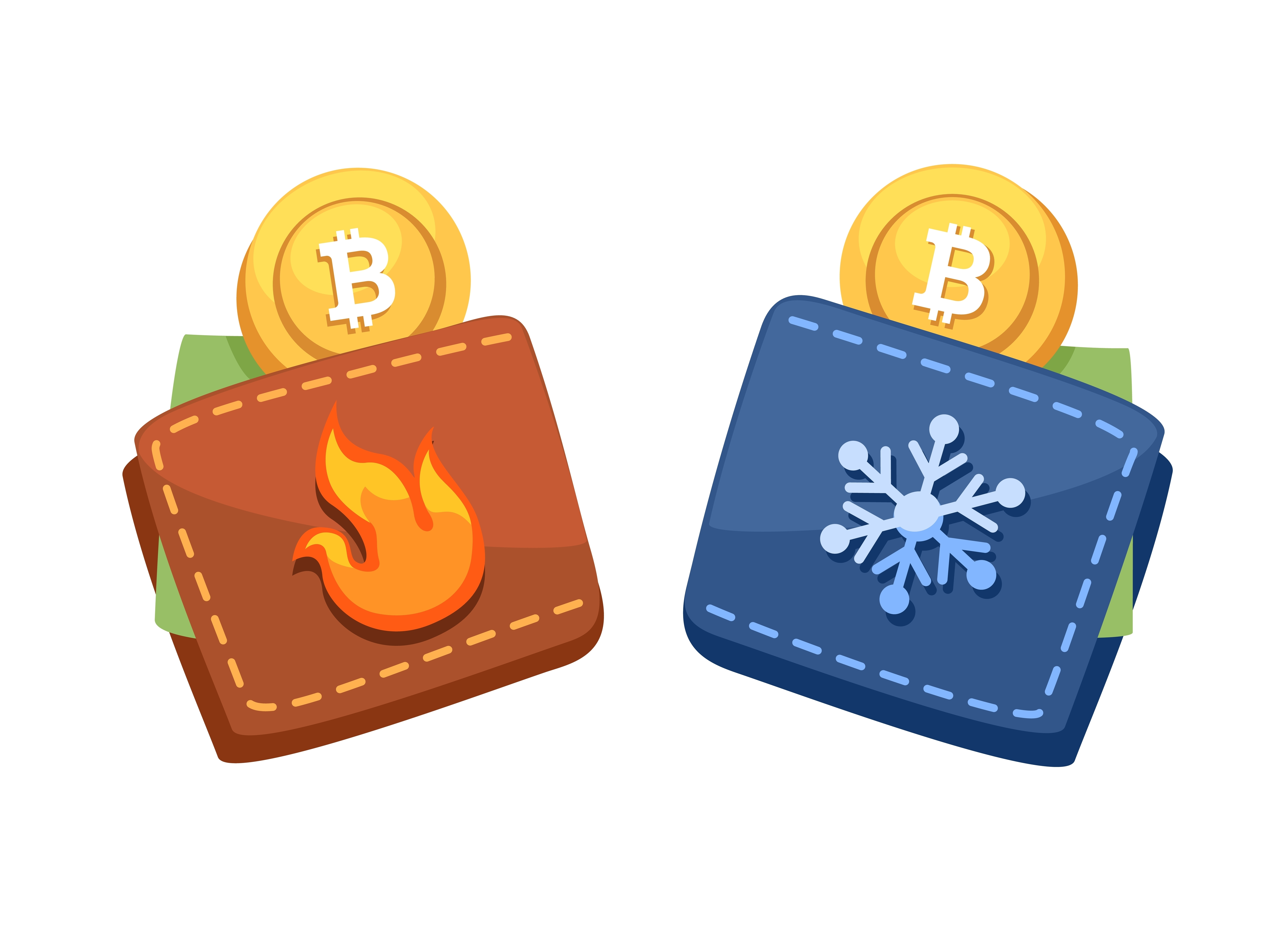
Here’s a surprising fact: how you store your cryptocurrency can make or break your entire investment. You’ve probably heard of hot wallets and cold wallets, but do you know why they’re so critical in the game of crypto security? Let’s break it down so you can make an informed choice for your digital assets.
What is a Hot Wallet?
Think of a hot wallet like carrying cash in your pocket. It’s convenient, easy to use, and great for quick transactions. But just like keeping too much cash in your wallet, there’s a higher risk.
Hot wallets are connected to the internet, which makes them perfect for regular use, like buying coffee with Bitcoin or swapping tokens on an exchange. But this convenience comes at a cost: exposure to cyber threats. Unfortunately, hackers love hot wallets – and here’s why:
- Hot wallets are often software-based and constantly online, making them vulnerable to attacks like phishing or malware.
- They store private keys in digital form, which could be accessed if your device is compromised.
- Big exchanges, where many people store their hot wallets, are frequent targets for high-profile attacks.
The takeaway? Use hot wallets for day-to-day transactions, but never leave large amounts on them. Treat them like you’d treat your cash: “Never carry what you can’t afford to lose.”
What is a Cold Wallet?
Now, cold wallets? They’re like burying your treasure in a secret vault—offline and untouchable by online thieves. These wallets don’t connect to the internet, keeping your private keys far out of hackers’ reach.
There are a few types of cold wallets that you should know about:
- Hardware wallets: Physical devices like Ledger or Trezor allow you to store private keys securely. They’re easy to use and incredibly hard for hackers to access.
- Paper wallets: A piece of paper with your private key written or printed on it. Simple but effective, as long as you store it in a safe and dry location.
Cold wallets are ideal for long-term holders or anyone who doesn’t plan to move funds frequently. They’re your ultimate crypto insurance—out of sight and safe from online attacks.
Which One is Right for You?
The choice between hot and cold wallets boils down to what kind of crypto user you are and how you plan to manage your funds. Let me make it simple:
- If you’re actively trading or making frequent transactions: You’ll need a hot wallet for its speed and ease of use. Platforms like MetaMask or Trust Wallet are popular, but keep in mind: the more you store, the more you’re exposed.
- If you’re a long-term HODLer or security-conscious user: A cold wallet is your best bet. Sure, it’s less convenient, but the peace of mind is worth it.
- If you want the best of both worlds: Consider using a combination of both. Keep a small amount in your hot wallet for daily use, and stash the majority in a cold wallet for maximum protection.
As the saying goes, “Don’t put all your eggs in one basket.” This applies to wallets too. Diversify your storage methods to balance convenience with security.
“Security doesn’t happen by accident. It’s something you plan for, invest in, and practice every day.”
Here’s a question to chew on: Do you have the right tools to keep your assets safe? In the next section, I’ll share the must-have tools that every crypto investor needs to protect their funds. Don’t miss it—your future self will thank you.
Tools You Need to Protect Your Crypto
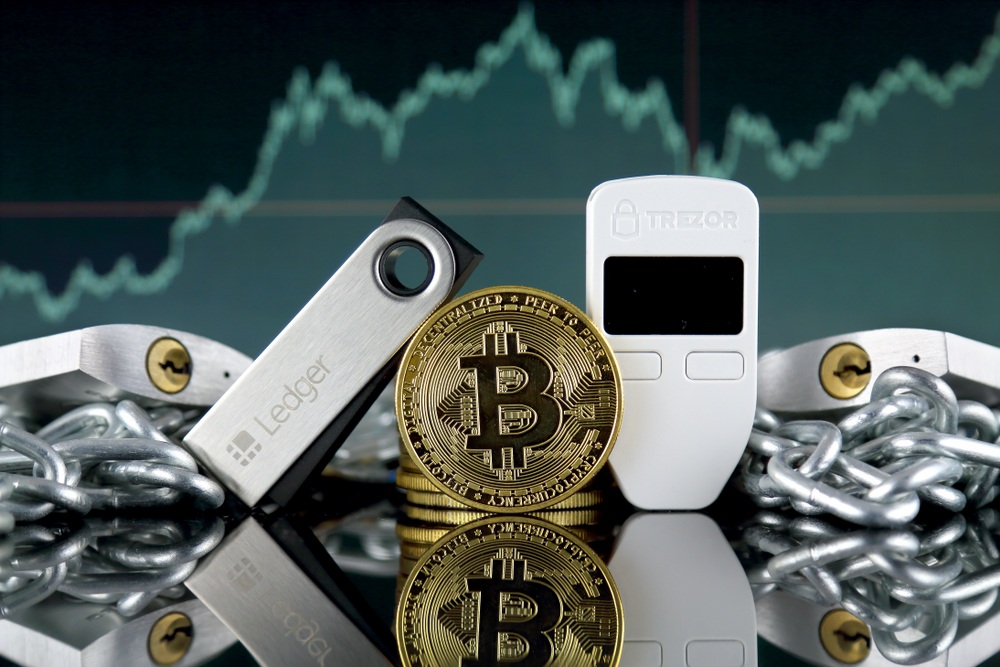
All it takes is one mistake—one hack, one phishing attempt, or one misplaced private key—and your entire crypto fortune could evaporate. But the good news? It doesn’t have to be this way. With the right tools in your arsenal, you can safeguard your digital assets like a pro. Trust me, these aren’t just good-to-haves. They’re must-haves. Let’s talk about the tools that can make all the difference.
Hardware Wallets: Your Fort Knox
Think of a hardware wallet as your personal crypto safe—a physical device that keeps your private keys offline and out of hackers’ reach. Why is this so important? Because as long as your private keys aren’t online, no amount of hacking will grant access to your funds.
The two biggest names in this space are Ledger and Trezor. They’re secure, widely trusted, and—let’s face it—pretty much non-negotiable if you’re serious about protecting your crypto. A study by Ciphertrace reported $3.8 billion in crypto was stolen in 2022, with much of it stemming from online vulnerabilities. A hardware wallet essentially removes you from this equation.
If you’ve never used one before, getting started might feel intimidating. Don’t sweat it. Platforms like Coinbase offer step-by-step guides to set them up easily. Pull the trigger on this investment—it’s worth its weight in Bitcoin.
Multi-Factor Authentication (MFA): Double the Lock, Double the Safety
Let’s face it: passwords alone haven’t been cool (or safe) since MySpace. If you’re still relying on one password to secure your crypto, you’re practically handing the keys to the burglars. Enter multi-factor authentication (MFA).
Here’s how it works: MFA combines something you know (your password) with something you have (like a code from your phone) or something you are (like a fingerprint or facial recognition). This means even if someone manages to steal your password, they can’t crack into your account without the second layer.
Most major crypto exchanges, wallets, and platforms support MFA. Don’t ignore it. Turn it on today. Trust me, it’s satisfying knowing hackers will need more than a single password to mess with you.
Backup Plans: Your Safety Net
“Failing to plan is planning to fail.” This quote has never been truer than when it comes to making backup plans for your crypto. Here’s the hard truth: if you lose your seed phrase, there’s no customer service line to call, no “Forgot Password?” button. Your funds are gone. Forever.
So, how do you avoid this? The answer is simple: secure backups. Some people write down their seed phrases and store them in a fireproof safe. Others split them into two parts and keep each part in a different secure location—say, one at home and one in a safety deposit box. Pick a method that works for you, but whatever you do, don’t leave it lying around in plain sight. Never save it on your phone or PC either; that’s like handing burglars an open invitation.
Here’s a quick pro tip: think redundancy. Consider using metal backup plates that are waterproof and fire-resistant. They’re designed specifically for this purpose and will ensure your seed phrase survives almost anything. And please, tell someone you trust where to find it. The last thing you want is for your backup to be useless if, God forbid, it’s needed one day and no one knows where to look.
A Thought for the Paranoid (But Smart)
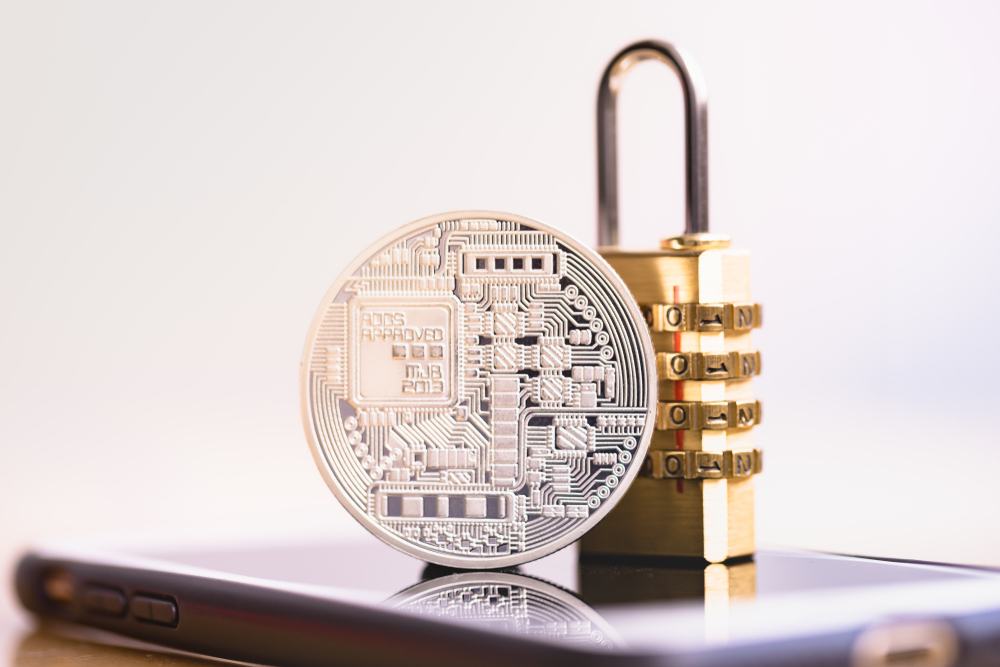
Imagine this scenario: you’ve done everything right. Your hardware wallet’s set up, MFA is locked and loaded, backups are stored securely. But what happens if someone sneaky spots a crack in your digital armor? Where exactly might they strike? Phishing scams, maybe? Or creeps exploiting public Wi-Fi? Ever wondered how these threats could still haunt your setup? Don’t worry—the next section will open your eyes to the digital danger zones and how to keep yourself bulletproof. Ready to find out?
The Digital Danger Zones
Let’s face it: the moment you go online, you’re stepping into a minefield of risks. Hackers, scammers, and digital tricksters are constantly on the lookout for careless crypto users. I’ve heard too many stories of people losing everything because they got a little too relaxed while scrolling or clicking. Don’t let that be you. Let’s go through some of the biggest online mistakes and how you can avoid them.
Beware of Phishing Scams
Phishing scams are like wolves in sheep’s clothing—they mimic trusted platforms, hoping you’ll hand over your login details or private keys. A common trick? You get an email or message claiming to be from an exchange or wallet service, urging you to “verify your account” or “reset your password.” The link looks legit, but in reality, it’s a trap.
Just imagine this: One click, and you unknowingly send your credentials straight to a hacker. According to a FireEye report, about 90% of cyberattacks worldwide start with phishing. That’s how big this issue is.
How can you avoid these scams?
- Never click links in unexpected emails or messages—always go directly to the official site.
- Double-check URLs for small differences like “binanse.com” instead of “binance.com”.
- Enable verification methods like Multi-Factor Authentication (MFA) to add a second layer of security.
Browser Safety Tips
Here’s something most people don’t think about: your browser can become a weak point for hackers if you’re careless. For instance, that innocent-looking Chrome extension you installed might be spying on everything you do. Not to mention the risks of using public Wi-Fi to check your wallet or portfolio. Hackers love public networks—it’s like stealing candy from a baby.
Stay safe:
- Use a reliable Virtual Private Network (VPN) for encrypted browsing, especially when traveling or using public Wi-Fi.
- Avoid storing sensitive information directly in your browser, like passwords or wallet addresses.
- Stick to trusted browser extensions. Do your research before installing anything new.
Social Engineering Threats
Did you know that hackers don’t always rely on flashy technical tricks to get what they want? Social engineering is all about exploiting human psychology. They might target you on social media, pretending to be a support rep, or create fake giveaways with promises of free Bitcoin. All they need is for you to share one small piece of information, and they’re halfway to your funds.
“In the age of information, ignorance isn’t bliss—it’s a vulnerability.” I can’t stress this enough: stop oversharing.
How to stay ahead of social engineering:
- Don’t publicly announce your holdings online—not in forums or even casual chats.
- Be cautious when someone asks for too much personal information, even if they sound legitimate.
- If you ever get DMs claiming urgency (e.g., “You must act now to secure your account!”), take a step back and verify through official channels.
Each of these digital traps has one thing in common: they prey on moments of carelessness. But armed with knowledge and a strong sense of caution, you can sidestep every single one of them.
So, now that we’ve uncovered the risks lurking online, it’s time to think beyond just protecting your assets in the moment. Have you ever wondered what happens to your crypto if something happens to you? Stick around—let’s talk about planning for life’s unpredictable turns.
Inheritance Planning for Your Crypto
Let’s be honest—planning for what happens to your crypto after you’re gone is not exactly a fun topic. But ignoring it? That could leave your loved ones not just grieving, but completely locked out of an important part of your estate. Unlike traditional assets, there’s no financial institution you can call if things go sideways. Your crypto’s safety—and its accessibility—depends entirely on you.
Here’s the tough reality: If you don’t prepare, your assets might simply disappear into the void. Sounds cold, right? But it’s true. Without a proper inheritance strategy, those private keys and wallets could sit untouched for eternity, gone forever like they never existed.
Access for Your Loved Ones
If tomorrow didn’t come, does your partner, family, or close friend know how to access your crypto? Chances are, they don’t. And frankly, how could they? Private keys are designed to be…well, private. But here’s the double-edged sword: keeping things too private could make retrieval impossible.
Think about this example: A man from Wales accidentally threw away a hard drive containing 7,500 Bitcoin. He’s been trying to retrieve it from a landfill since 2013 because there’s no magical call center for lost Bitcoin. Now, imagine a loved one of yours in that spot—but even worse, because they don’t know where to start.
The emotional impact of losing you is tough enough. Don’t leave your family stuck scrambling to unlock an asset they can’t even touch.
Solutions
Planning for crypto inheritance doesn’t need to be a nightmare. Here’s how you can make it simple—and secure:
- Create a Secure Document: Write clear instructions that outline how to access your crypto but do this securely. Include details like wallet locations, a trusted hardware wallet, and seed phrases (only if absolutely necessary). But be careful—don’t leave this document lying around.
- Leverage a Password Manager: Some password managers allow you to store highly sensitive data securely. Tools like LastPass or 1Password (or whatever you trust most) can act as a safe place for private keys or wallet passwords. Share access only with someone you genuinely trust.
- Use a Dead Man’s Switch: Sounds intense, but it’s a real solution! A dead man’s switch is a system that delivers sensitive info (like wallet access) to a chosen contact if you become unresponsive for a certain period. There are tech tools out there designed for this purpose specifically.
- Avoid Public Sharing at All Costs:Never write down your private keys on something publicly accessible, whether online or offline. Every year, we hear horror stories of people losing everything because of careless decisions. Don’t let that be you.
One last tip? Talk to your family. Seriously. Open communication about your crypto—not your key details, but the fact that you own digital assets—is key (no pun intended). Studies show that families often overlook hidden assets during estate management simply because no one knew they were there. Don’t let this happen to yours.
“A wise man plants trees whose shade he knows he will never sit in.” – Greek proverb
So, now that you’ve got a few ideas to keep access open for those you care about—it’s time to think long-term while staying secure. But this is only part of keeping your crypto safe. Did you know there are specific dos and don’ts that can make or break your overall security approach? Let’s check it out in the next section. Ready?
Dos and Don’ts of Crypto Safety
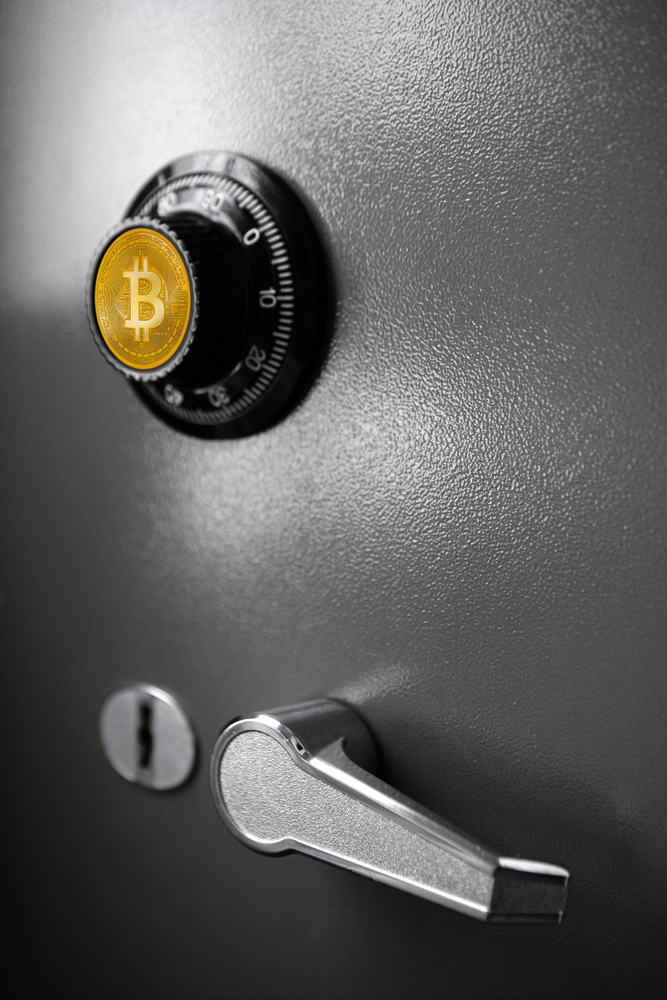
If you’re serious about keeping your crypto secure, there are some golden rules you simply can’t ignore. I’ve seen countless stories of people losing everything because they didn’t follow these basic guidelines. Let me make it easy for you with a quick, straight-to-the-point list of what to do—and what not to do—to keep your assets as safe as a cold wallet in a locked vault.
The DOs
- Enable multi-factor authentication (MFA): Hackers are clever, but using MFA makes it a lot harder for them to gain access to your accounts. A simple SMS code or an authentication app can save your holdings from being drained. Think of it as locking your door and setting up a security alarm.
- Use a hardware wallet: If you’ve got serious crypto, don’t trust an exchange to keep it safe. Pick up a hardware wallet like Ledger or Trezor. Hackers can’t touch what’s offline. It’s like putting your gold bars in a secure safe instead of leaving them in your mailbox.
- Update your software regularly: Outdated software can be a golden ticket for hackers. Whether it’s your wallet app or your PC’s operating system, keep everything updated to patch vulnerabilities.
- Stay informed: The crypto space evolves rapidly, bringing new security threats every day. Keep an eye out for news about scams or updated practices. Knowledge is your best defense. Someone once said, “An informed investor is a protected investor.” Words to live by.
The DON’Ts
- Don’t leave large amounts on exchanges: Exchanges are great for trading but terrible for storage. Remember, “Not your keys, not your coins.” The recent hacks we’ve seen on some big-name platforms prove this again and again.
- Never share your private keys: This rule is untouchable. A private key is like the password to your vault. Share it, and you might as well hand over your crypto. Even your closest friend doesn’t need it.
- Don’t click on suspicious links: Phishing scams are getting more sophisticated by the day. A fake email claiming there’s an issue with your Binance account? Don’t fall for it. Always double-check URLs and avoid clicking anything that feels off. Better yet, type the website address manually every time.
- Don’t ignore wallet warnings: If your hardware wallet displays something unusual or asks you to approve a strange transaction, stop and think. Scammers have started to manipulate hardware wallets too. Trust your gut and investigate before clicking anything.
Here’s a striking fact for you: A study by Chainalysis revealed that over $3.8 billion was stolen in crypto scams in 2022 alone. Pretty sobering, right? But this just proves that taking security seriously is non-negotiable.
“Security isn’t expensive, it’s priceless.”
Crypto freedom feels amazing, but it comes with responsibility. Stick to these dos and don’ts, and your portfolio will breathe easy, knowing it’s protected. But are you hungry to learn even more? What if I told you there are trusted resources that can expand your knowledge and help you become a true master of crypto safety? Keep reading—you’ll want to bookmark what’s coming next.
Trusted Resources for Learning More

If you’re serious about keeping your crypto assets safe, there’s no better weapon than knowledge. Sure, I’ve shared plenty of tips and strategies, but staying informed is the real secret to staying one step ahead of potential threats. The more you learn, the better prepared you’ll be to protect your hard-earned digital assets. So, where can you turn for reliable, up-to-date information? Let me walk you through some trusted resources that I personally respect and recommend. These platforms aren’t just credible—they’re lifesavers.
Coinbase: Learn the Basics
Let’s start with Coinbase, one of the largest and most trusted names in the industry. Their learning hub is packed with easy-to-follow guides, whether you’re a complete beginner or already have some experience with crypto. Want to know how to secure your wallets like a pro? They’ve got you covered with their step-by-step guide on safe storage. And the best part? They break things down clearly without making you feel confused or overwhelmed.
Protecting your crypto assets starts now
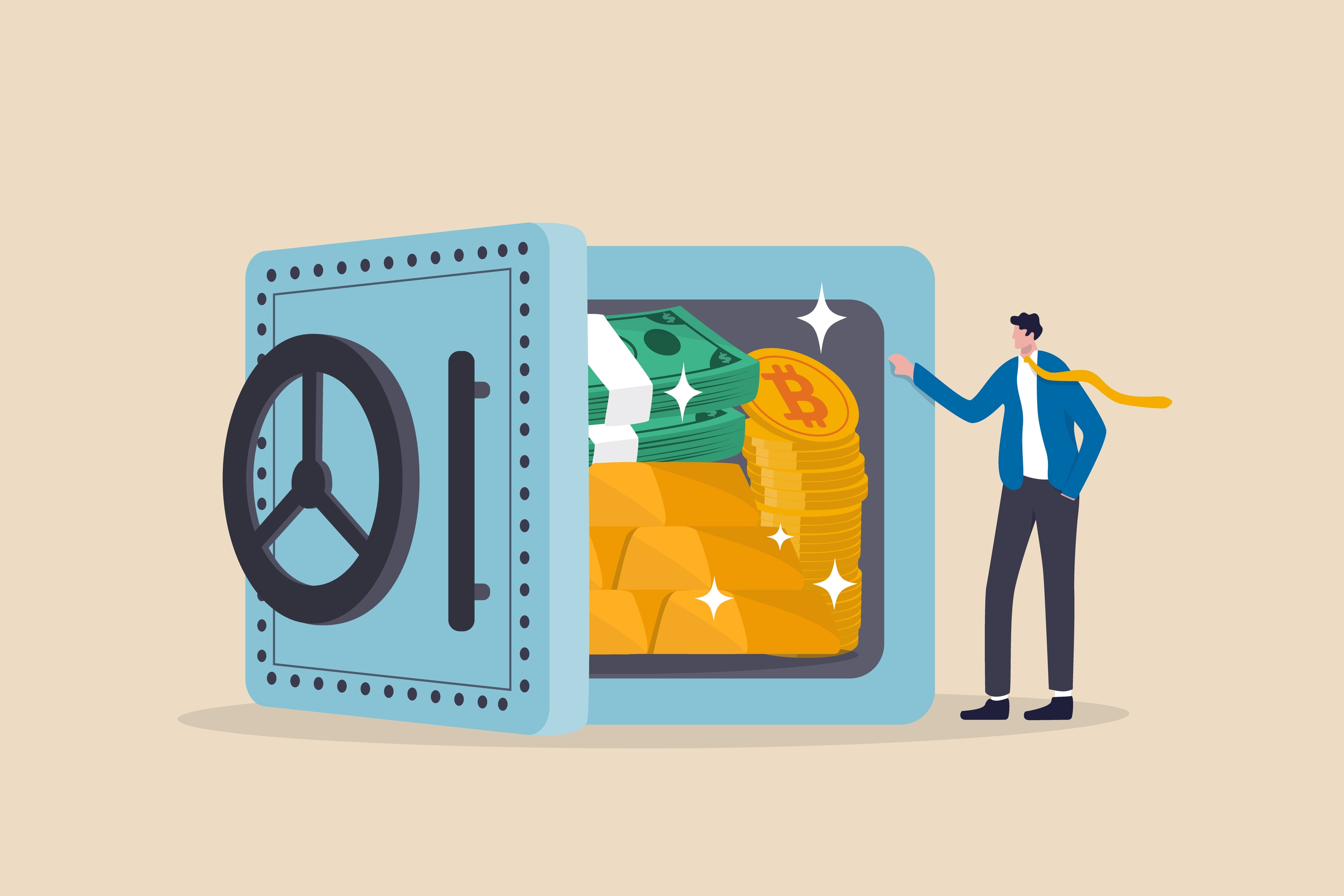
Let’s face it—crypto security isn’t just something you check off once and forget about. It’s a long-term commitment to protecting your digital assets and, ultimately, your financial freedom. If you’ve made it this far, you’re already ahead of the game. Now let’s finish strong. Here’s your final checklist and a message to keep you motivated.
Final checklist for crypto safety
This is your quick, actionable summary of all the steps you need to secure your crypto. Keep this list handy to turn good intentions into real results:
- Use a hardware wallet: Devices like Ledger or Trezor are an absolute must for keeping your assets offline and out of reach of hackers. If you don’t own one yet, make it your next purchase.
- Enable multi-factor authentication (MFA): A simple password isn’t enough. Add MFA to all your crypto accounts to make them significantly tougher to crack.
- Backup your seed phrases securely: Write them down, store them in safe locations, and never share them online. Splitting your backup between two secure spots is even better.
- Stay alert to phishing attempts: Always double-check URLs, avoid clicking suspicious links, and be careful where you enter your credentials. Scammers are clever, so stay sharper.
- Keep your browser secure: Use a trusted VPN, disable unnecessary browser extensions, and avoid using public Wi-Fi, especially for crypto transactions.
- Don’t park large amounts on exchanges: Exchanges are vulnerable targets. Use them for trading, but withdraw your funds to your secure wallet as soon as possible.
- Plan for inheritance: Create a clear, secure plan for your loved ones to access your crypto if something happens to you. Don’t leave them guessing.
- Stay informed: Keep an eye on reliable resources like Coinbase or ECCU, and regularly update your security practices.
That’s it—the essentials to protect your assets like a pro. It’s not rocket science, but doing these things consistently makes all the difference.
My message to every crypto holder
If there’s one thing I want you to take from this, it’s this: your financial freedom depends on your security practices. Crypto can empower anyone to take control of their own money, but it comes with big responsibilities. There’s no “oops, I forgot my password” helpline, no bank to refund a stolen account. The upside? It’s all in your hands. With the right tools and mindset, you can sleep easier knowing your assets are safe.
I’ve heard too many horror stories from people who lost their life savings to a phishing scam or accidentally misplaced their private keys. Don’t let that be you. You have the knowledge now—use it.
Ready to take charge?
The best time to start securing your crypto is today. Whether it’s setting up a hardware wallet, creating a backup strategy, or enabling two-factor authentication, take action right now. Bookmark this guide, visit the trusted resources mentioned earlier, and stay proactive about protecting your assets.
Want to stay ahead of the curve? Keep checking back on my blog here for future updates, tips, and trustworthy insights into the crypto world. Financial freedom starts with you. Let’s make sure you protect it.